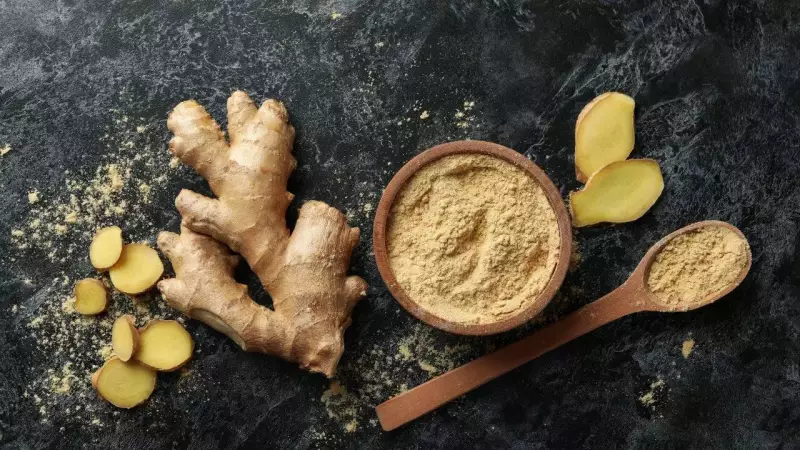
Ginger, known as 'adrak' in Hindi, holds a revered place in both Indian kitchens and traditional medicine cabinets. This versatile root adds warmth to teas and flavour to curries while offering impressive health benefits. But many health-conscious Indians wonder whether they should reach for fresh ginger or its dried counterpart, sonth.
Dry Ginger (Sonth): Concentrated Power for Specific Ailments
Dry ginger undergoes a transformation process where fresh ginger roots are dried and ground into fine powder. This drying process removes water content and concentrates the bioactive compounds, making sonth particularly potent for certain health conditions.
The National Library of Medicine confirms that drying ginger actually increases its antioxidant concentration. Dry ginger shines particularly for its strong anti-inflammatory properties, making it ideal for managing arthritis and joint pain. It's also traditionally used to combat respiratory issues like coughs, sore throats, and seasonal flu symptoms.
From an Ayurvedic perspective, dry ginger helps balance vata dosha, making it suitable for treating coughs, colds, and digestive issues when properly administered.
Fresh Ginger (Adrak): The Versatile Daily Health Booster
Fresh ginger in its raw form offers different advantages that make it perfect for daily consumption. Its zesty, pungent flavour with subtle sweetness makes it versatile in both cooking and traditional remedies.
Fresh ginger is particularly effective against nausea, whether from motion sickness, morning sickness during pregnancy, or other conditions. Consuming fresh ginger slices or brewing ginger tea can provide quick relief.
Rich in antioxidants, fresh ginger helps protect the body from oxidative stress and may reduce chronic disease risk. It also supports digestion by stimulating saliva and bile production, aiding food breakdown and preventing discomfort.
A 2013 study published in PubMed Central found that fresh ginger may specifically help protect the respiratory system, an advantage not shared by dry ginger.
Making the Right Choice for Your Health Goals
The choice between dry and fresh ginger depends entirely on your specific health objectives. For inflammation management and seasonal flu relief, dry ginger proves more effective due to its concentrated compounds. For nausea relief, antioxidant intake, and general digestive support, fresh ginger excels.
Ayurvedic wisdom suggests that fresh ginger might increase vata in sensitive individuals, potentially causing gas and bloating. Therefore, understanding your body's constitution becomes important when choosing between the two forms.
The optimal approach involves incorporating both types into your diet to enjoy the full spectrum of ginger's health advantages. Use dry ginger tea for respiratory issues and fresh ginger in meals or teas for daily digestive support and nausea management.





